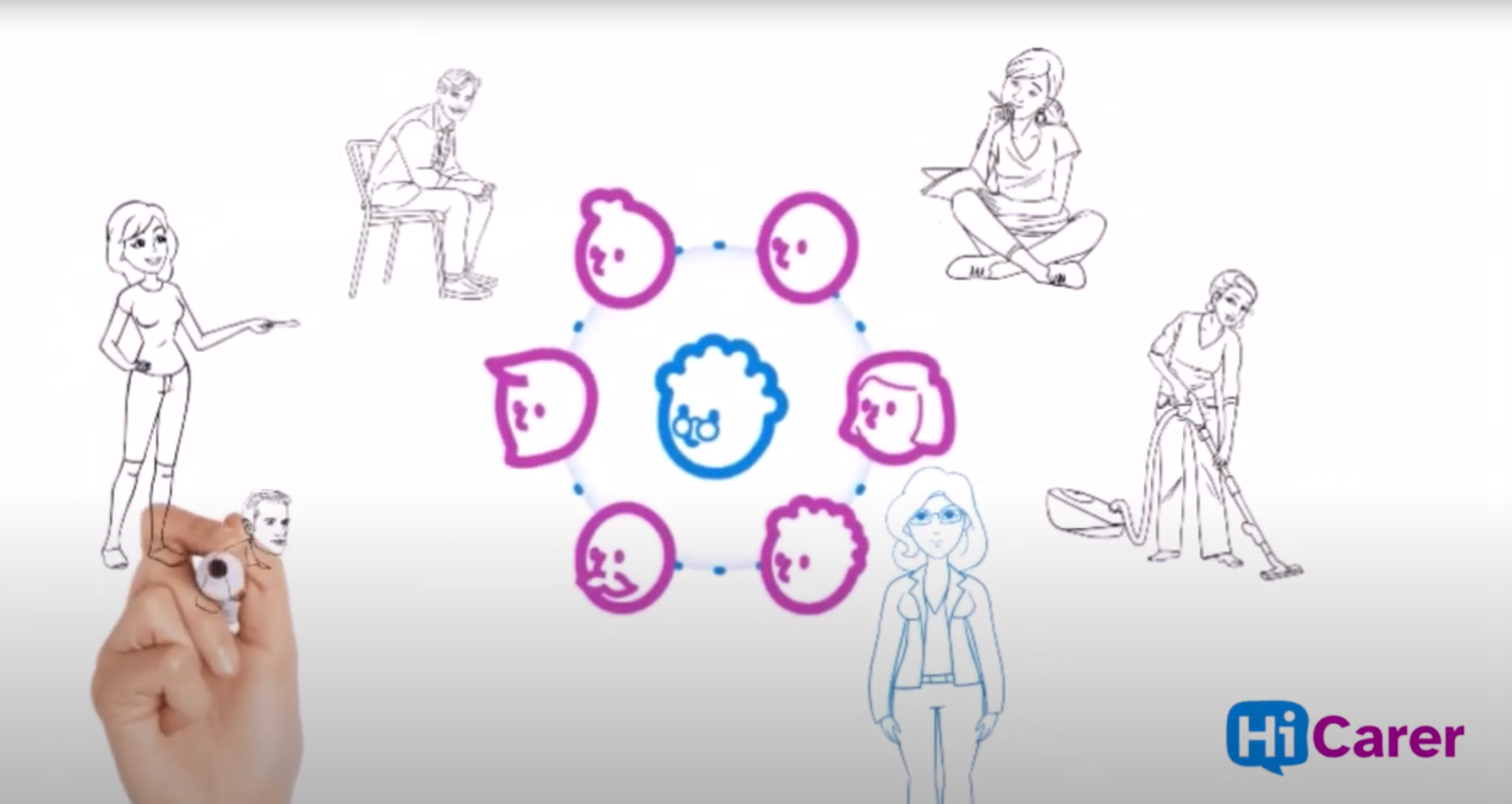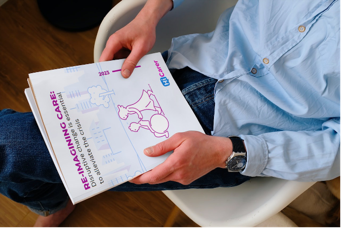Combating Loneliness: The Power of Support Circles for Older People

Loneliness is an issue that many older people face but one that often goes unnoticed—until it's too late. While age can come with its own set of joys, it can also mean a decrease in one's social circle and awareness of community. Fortunately, there are things we can do to help keep our elderly loved ones socially engaged and fight loneliness. One such solution is the idea of setting up support circles around older people who need care and support. Support circles provide support, friendship and engagement, creating a network of people who look out for one another and providing the companionship so often missing in areas hit by loneliness. In this blog, we'll be exploring why loneliness can be so dangerous for older people, how it can be prevented, and why HiCarer thinks that Support Circles are a great option to help combat loneliness and help people remain living in the community for longer.
The Impact of Loneliness
Loneliness can be extremely difficult and have some serious health risks, which is why it’s so worrying that it is a growing problem particularly among older people. As people age, they often experience physical limitations and a decrease in the number of social contacts that were once present in their lives, with time, sadly people also lose spouses or family members, or can’t maintain relationships due to psychological or physical limitations.
Loneliness often goes hand in hand with a lack in motivation and trouble sleeping. Research conducted on the topic shows that those who are lonely are more likely to suffer from depression, anxiety, and other mental health issues. In addition, chronic loneliness has been linked to a higher risk for physical diseases such as cardiovascular disease and stroke. Studies also suggest that loneliness can be more dangerous than obesity for premature death risk.
Aging can have a significant effect on how older people experience and engage in the world around them. Unfortunately, this often leads to feeling lonely, isolated, and depressed as hearing loss makes it difficult to hear conversations, vision loss prevents them from seeing people and objects, or physical impairments make some activities extremely challenging. These limitations can also lead to reduced social opportunities and self-confidence, which sadly inhibits their ability to partake in activities that used to bring them joy. To make matters worse, impaired hearing and vision also increases their risk of falls and limits their access to transportation.
However, these limitations often also bring about the need for care and support, so trying to find a way in which this care and support can be provided in a meaningful way, rather than simply the most efficient way, seems to present an opportunity to help combat loneliness.
Strategies for Combating Loneliness in Older People
There are some national services which can help people combat loneliness
- The Campaign to End Loneliness works to help combat loneliness in people of all ages. It aims to reach those who are lonely and help them get the support that they need; advise existing services and activities on how to address loneliness; and develop new services and activities to help combat loneliness.
- Age UK has its own services to help older people who are lonely. It runs a telephone friendship service , which is a national befriending service that matches volunteers with an older, lonely person for a weekly phone call. Those 30-minute weekly calls can make all the difference for someone who is lonely. You can opt to donate a sum of money to help with the charity’s work, or sign up to be a volunteer and be the person that can chat to an older person once a week and make their day.
- Alternatively, The Silverline offers a 24-hour helpline service where older people can call for a chat, day or night.
Technology can help bridge the gap between older people and the outside world in several ways. It can reduce isolation, enabling older people to stay in touch with family, friends, and caregivers without having to leave their homes. Video chat services are especially helpful for staying connected with loved ones who live far away. Technology can also provide connectivity with activities that might not be available in person, like virtual exercise classes or art classes. Smartphones and tablets can create easier access to online resources such HiCarers appointment reminders or medication logs. Additionally, many companies offer assisted technology devices that allow seniors to control appliances remotely or use voice commands to adjust lights or temperature.
But, what can we all do to help? It can start within your own family; make sure that older relatives are looked after and offer company, even if only over the phone. Elderly relatives may benefit from a companionship service for human contact, or you could help research ways to get out and go to local classes and events on a regular basis. Check-in on elderly neighbours, as they may also be feeling lonely, particularly if they live alone.
 HiCarer’s platform helps you use support circles to help co-ordinate practical tasks that need doing, a way of combining the support and companionship that someone may need to combat loneliness with practical and care tasks that enable an older person to remain living in their own home. The beauty of the support circle is that it not only shows what needs doing, but enables everything to be scheduled so that you can see if there’s a time when someone might be lonely, and just in need of a lunch, a trip out, or just a friendly chat.
HiCarer’s platform helps you use support circles to help co-ordinate practical tasks that need doing, a way of combining the support and companionship that someone may need to combat loneliness with practical and care tasks that enable an older person to remain living in their own home. The beauty of the support circle is that it not only shows what needs doing, but enables everything to be scheduled so that you can see if there’s a time when someone might be lonely, and just in need of a lunch, a trip out, or just a friendly chat.
While technology can help bridge the gap between isolated individuals and the ones they want to connect with, a combination of different activities is key. From telephone friendship, companionship from family and friends, joining clubs or going to activities, to using HiCarer's platform to securely coordinate tasks such as household tasks, practical care, or shopping with the reliable support of others; these are all great steps in improving relationships for our older people. Through our collective effort, we can give reassurance to those who are feeling alone and help combat the increasing epidemic of loneliness in older adults.

 By
By


